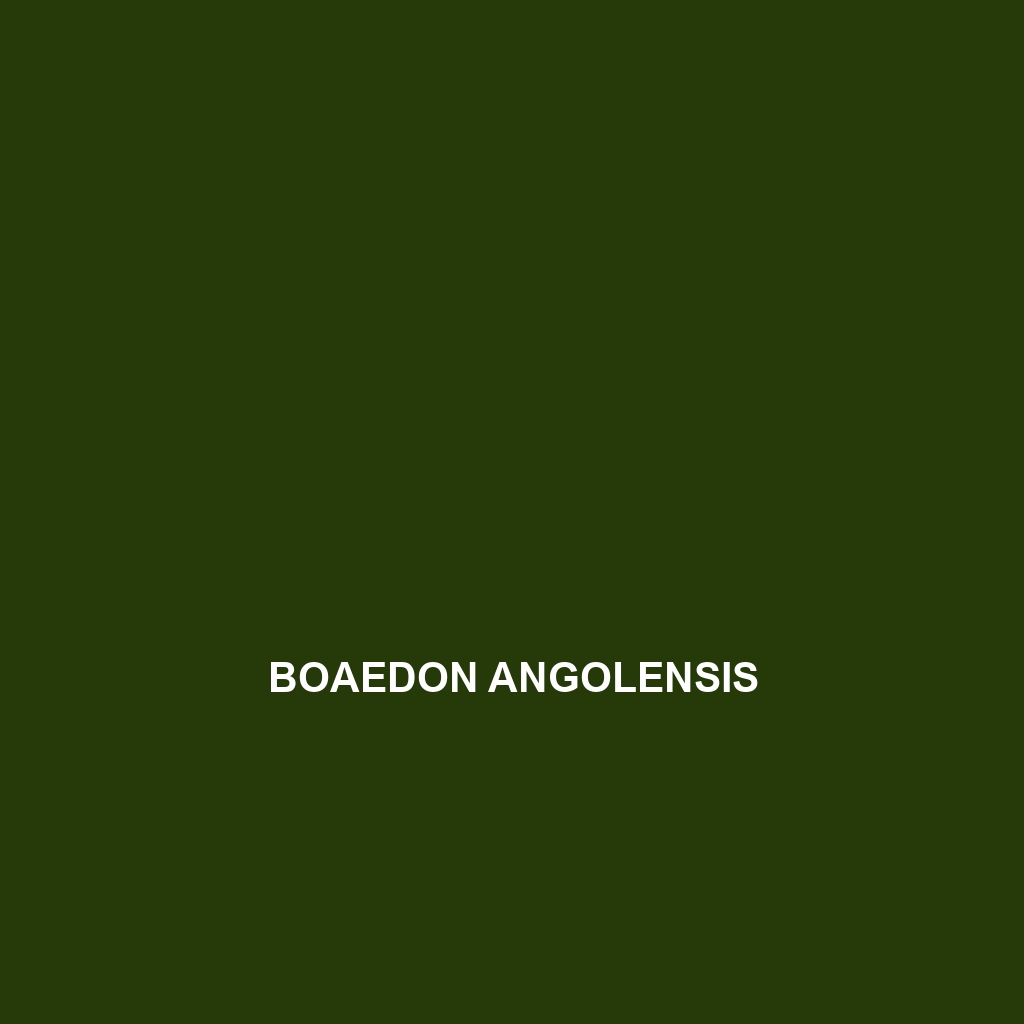Species Description: Boaedon angolensis
Common Name: Boaedon angolensis
Scientific Name: Boaedon angolensis
Habitat
Boaedon angolensis is primarily found in the diverse ecosystems of Sub-Saharan Africa, particularly in countries such as Angola, Zambia, and the Democratic Republic of the Congo. This species thrives in a variety of habitats, including savannas, grasslands, and forest edges, where it can easily blend with its surroundings. The preference for moist environments, near water bodies like rivers and lakes, contributes significantly to its distribution.
Physical Characteristics
Boaedon angolensis is a medium-sized snake, typically reaching lengths of 0.7 to 1.5 meters (2.3 to 4.9 feet). Its coloration is quite distinct, displaying a combination of dark brown to olive green hues with lighter bands or blotches that offer effective camouflage against its natural habitat. The body is elongated and slender, featuring a somewhat flattened head that aids in hunting and foraging.
Behavior
This species exhibits primarily nocturnal behavior, being most active during the night. Boaedon angolensis is known for its agility and quick movements, which are beneficial for both hunting and avoiding predators. It often utilizes both terrestrial and arboreal habitats, climbing trees and shrubs to ambush its prey or evade danger. The snake’s calm disposition makes it a subject of interest among reptile enthusiasts.
Diet
Boaedon angolensis is carnivorous, primarily feeding on small mammals, birds, and reptiles. Its diet mainly consists of rodents and other small mammals, which it captures using constriction. The snake’s feeding habits are adapted to its habitat, allowing it to efficiently hunt under the cover of darkness.
Reproduction
The reproductive habits of Boaedon angolensis are characterized by oviparity, with females laying clutches of typically 5 to 15 eggs during the warm, rainy season. The eggs are often deposited in hidden locations to protect them from predators. After a gestation period of about 60 days, hatchlings emerge, measuring approximately 20 to 30 centimeters (7.9 to 11.8 inches) in length.
Conservation Status
As of the latest assessments, Boaedon angolensis is classified as “Least Concern” by the International Union for Conservation of Nature (IUCN). This status indicates that the species is not currently facing significant threats, although habitat loss and human encroachment pose potential risks in certain areas.
Interesting Facts
– Boaedon angolensis is often mistaken for other similar-looking species due to its coloration and patterns.
– This species plays a vital role in controlling rodent populations, thus contributing to the balance of its ecosystem.
Role in Ecosystem
Boaedon angolensis is an important predator within its ecosystem, helping to regulate the populations of various small mammals and other prey species. Its presence indicates a healthy environment, and its interactions with other species, including competitors and predators, highlight the interconnectedness of the ecological community it inhabits.
